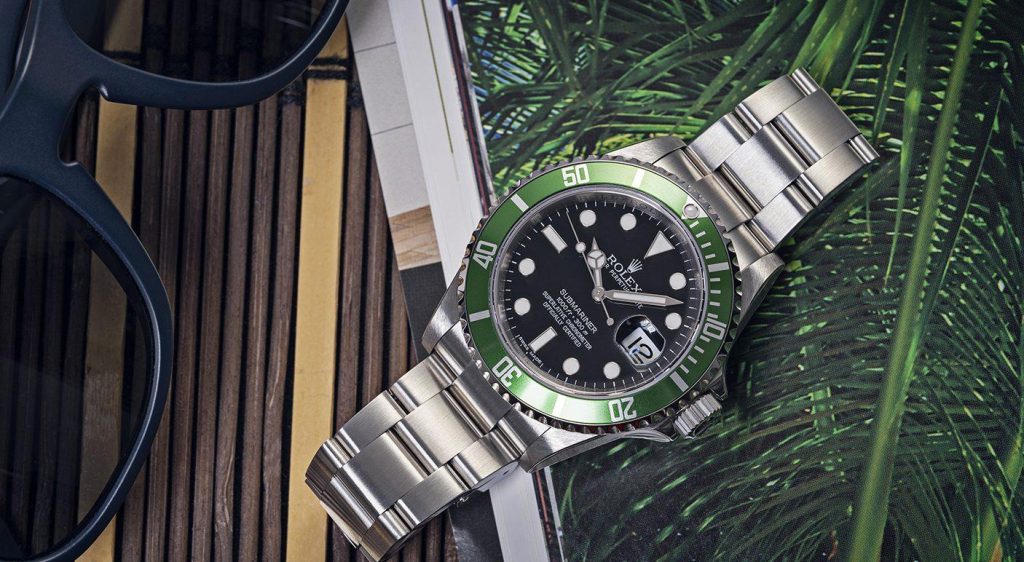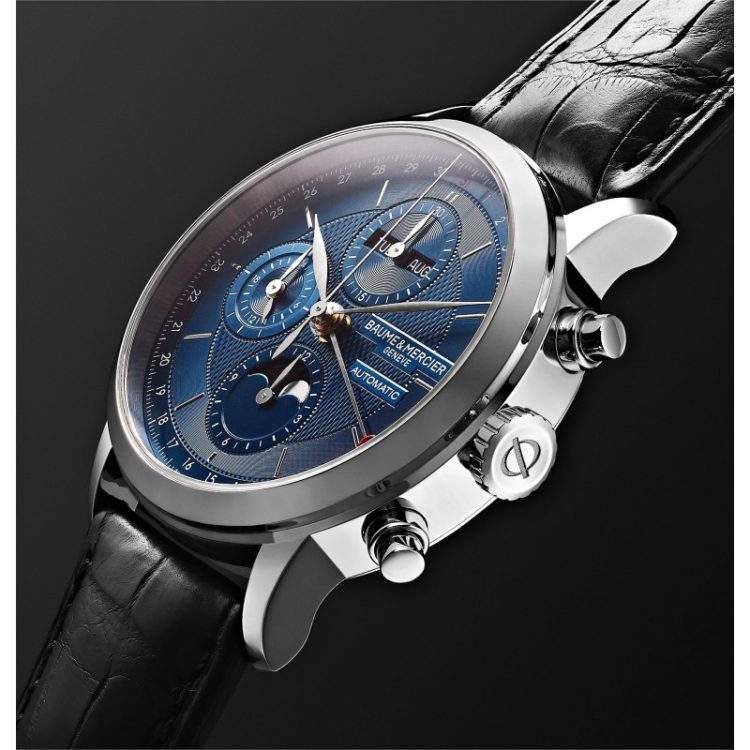Introduction
When discussing luxury watches, Rolex and Baume & Mercier are two names that instantly come to mind. Both brands represent the pinnacle of Swiss watchmaking, but they appeal to slightly different segments of the market. Rolex, the more famous of the two, is often associated with prestige, innovation, and precision, while Baume & Mercier has built a reputation on timeless elegance, Swiss craftsmanship, and understated luxury.
While design and heritage often dominate discussions around these two brands, another crucial aspect that sets them apart is their approach to technology. From their movements and materials to their mechanisms and features, technology plays a pivotal role in shaping the identity and functionality of their watches. How do these two brands stack up when it comes to technological advancements? Which brand employs the most cutting-edge technology, and how do these innovations translate into user experience?
In this article, we’ll dive deep into the technological innovations behind Rolex and Baume & Mercier watches. We’ll explore their movements, materials, water resistance, accuracy, mechanical features, and much more, all while comparing how each brand pushes the envelope in the realm of watchmaking technology. Through this analysis, we’ll provide a comprehensive understanding of how these two watchmakers measure up in the ever-evolving world of horological innovation.
Chapter 1: Rolex Watches – Pioneers in Precision and Innovation
1.1 A Legacy of Technological Excellence
Rolex is widely regarded as one of the most innovative and technologically advanced watch brands in the world. With a history that dates back to 1905, the brand has consistently introduced groundbreaking technologies that have redefined the standards of Swiss watchmaking. The company’s dedication to quality, accuracy, and reliability has positioned it as a leader in the luxury watch industry.
Rolex’s commitment to pushing the boundaries of watch technology is evident in several key areas, including its movements, materials, chronometric performance, and design features. Let’s take a closer look at some of the most significant technological innovations Rolex has introduced over the years.
1.2 Rolex Movements: Precision in Every Tick
Rolex movements are among the most advanced in the industry. The brand exclusively uses in-house calibers that are known for their accuracy, reliability, and robustness.
- Caliber 3135: One of the most well-known movements in Rolex history, the Caliber 3135 is found in iconic models like the Rolex Submariner and the Rolex Datejust. This movement features a self-winding system powered by the brand’s Perpetual rotor, ensuring long-lasting and precise timekeeping. The movement is also known for its exceptional power reserve, which can last up to 48 hours, depending on the model.
- Caliber 3255: Found in models such as the Rolex Day-Date, the Caliber 3255 is an example of Rolex’s advancement in chronometric precision. It features Rolex’s Chronergy escapement, which enhances the movement’s efficiency and boosts its power reserve to 70 hours. The movement also boasts a Superlative Chronometer certification, ensuring that it operates within a precision range of -2/+2 seconds per day.
- Cosmograph Daytona Caliber 4130: The Daytona collection represents Rolex’s entry into the high-performance chronograph segment, and the Caliber 4130 is at the heart of this movement. The 4130 is an innovative self-winding chronograph movement with fewer components, reducing the need for maintenance and improving reliability. Its vertical clutch system ensures precise timing without the usual jerky hand movements seen in some chronographs.
Rolex movements are designed for longevity and precision, and the brand’s commitment to research and development ensures that every movement delivers consistent performance, year after year.
1.3 Rolex’s Innovations in Materials and Durability
One of the cornerstones of Rolex’s technological prowess is its use of advanced materials that improve the durability, scratch resistance, and overall performance of its timepieces.
- Oystersteel: Rolex’s proprietary Oystersteel is a high-grade steel alloy that is incredibly resistant to corrosion and scratches. Made from a special form of stainless steel, this material is used in many of Rolex’s models, including the Submariner and Explorer. Oystersteel offers a unique combination of strength and beauty, ensuring that Rolex watches not only last for decades but also maintain their pristine appearance.
- Cerachrom Bezel Inserts: Rolex’s Cerachrom bezel is a key feature in several models, including the Submariner and the GMT-Master II. This ceramic material is highly resistant to scratches, UV rays, and corrosion. It also helps preserve the bezel’s color, ensuring that it remains vibrant and intact for many years.
- Rolesor: Rolex is known for its unique use of Rolesor, a combination of Oystersteel and 18k gold, which is used in many of the brand’s models. This blend of materials ensures a balance between luxury and durability, while also providing a distinct look that is instantly recognizable.
- Everose Gold: In addition to yellow gold and white gold, Rolex introduced its own proprietary blend of 18k rose gold known as Everose. This innovative material is alloyed with copper to provide a unique color that resists fading over time, ensuring that the watch maintains its rich, warm tone.
- Glidelock and Easylink Bracelet Adjustments: Rolex’s bracelets are often praised for their comfort and adjustability. The Glidelock clasp system allows users to adjust the bracelet length without the need for tools, while the Easylink extension system allows for minor adjustments to the bracelet’s length, making it perfect for different wrist sizes or varying conditions.
1.4 Water Resistance and Professional Features
Rolex has long been at the forefront of water-resistant technology. The brand’s Oyster case, first introduced in 1926, is the foundation of this technology. Rolex’s expertise in waterproofing has led to the development of several innovations that make Rolex watches ideal for professional use in extreme environments.
- Oyster Case: The iconic Oyster case is a monobloc design that is hermetically sealed to prevent water and dust from entering the case. This design has been refined over the years and remains a benchmark in the watchmaking industry. Rolex watches with the Oyster case are capable of withstanding high pressures, making them suitable for professional diving, sailing, and other activities that require high durability.
- Deepsea and D-Blue Dial: The Rolex Deepsea is a diver’s watch designed to withstand extreme depths, with a water resistance rating of up to 3,900 meters (12,800 feet). The D-Blue Dial features a gradient color that symbolizes the transition from shallow water to the deepest depths of the ocean. The Ringlock System, used in the Deepsea, provides unparalleled protection against pressure and ensures the integrity of the case at extreme depths.

Chapter 2: Baume & Mercier Watches – Tradition Meets Technology
2.1 Baume & Mercier’s Technological Commitment
Baume & Mercier, founded in 1830, is known for its focus on elegance, Swiss craftsmanship, and timeless designs. While the brand is not as globally renowned for its technological innovations as Rolex, it has consistently incorporated modern technologies into its timepieces to offer exceptional performance, durability, and style.
Baume & Mercier’s in-house movements, materials, and mechanical features represent the company’s commitment to creating watches that embody both technical excellence and aesthetic beauty.
2.2 Baume & Mercier Movements: Mechanical Excellence
Baume & Mercier has a long history of using Swiss movements that deliver reliable and precise timekeeping. While the brand does not produce all of its movements in-house like Rolex, it works with some of the finest Swiss manufacturers, such as ETA and Sellita, to ensure that its watches meet the highest standards of precision.
- Baumatic Movement: The Baumatic movement is an exciting technological development for Baume & Mercier. Launched in 2018, the Baumatic features a self-winding movement with a 120-hour power reserve, which is significantly longer than most of the brand’s previous models. The movement also incorporates magnetic resistance (up to 1,500 Gauss), ensuring that the watch continues to function reliably in environments where magnetic fields could otherwise affect its accuracy.
- Movement with Silicon Escapement: One of the standout features of the Baumatic movement is its use of silicon escapement components, which enhance the movement’s longevity and accuracy. Silicon is highly resistant to magnetic fields and temperature fluctuations, making it an ideal material for modern watchmaking.
- Precision and Durability: Baume & Mercier’s movements are known for their precision, with many models tested to COSC standards for chronometric certification. The Clifton Baumatic line, in particular, has received accolades for its smooth operation and outstanding reliability.
2.3 Baume & Mercier’s Materials and Durability
Baume & Mercier’s approach to materials blends tradition with innovation, ensuring that its timepieces offer both beauty and durability.
- Stainless Steel and Gold: Like Rolex, Baume & Mercier uses high-quality stainless steel and gold in its timepieces. The brand’s Clifton collection, for example, is available in both stainless steel and a combination of steel and 18k gold. The use of 18k gold ensures that these timepieces maintain a luxurious look while remaining durable.
- Sapphire Crystal: Baume & Mercier uses sapphire crystal for its watch faces, which is known for being highly scratch-resistant and durable. The crystal is anti-reflective, providing a clear view of the dial without distortion.
- Water Resistance: Baume & Mercier watches are designed to withstand everyday wear and tear, including water exposure. The brand’s Clifton and Riviera collections are equipped with water resistance ratings that make them suitable for swimming and light diving. However, they are not designed to withstand the extreme depths that Rolex watches are known for.
2.4 Additional Technological Features
- Date Function: Many of Baume & Mercier’s watches, such as the Clifton Automatic, feature a date display function, which is a hallmark of modern watchmaking.
- Screw-Down Pushers and Crowns: For models designed for sporting use, such as the Riviera Chronograph, Baume & Mercier incorporates screw-down pushers and crowns to improve water resistance and prevent accidental changes to settings during wear.
Chapter 3: Comparing the Technology of Rolex and Baume & Mercier
3.1 Movement Technology
- Rolex excels in producing in-house movements that offer unparalleled precision, reliability, and innovative features like the Chronergy escapement and vertical clutch system in the Daytona. Their movements are engineered for long-term durability, requiring minimal maintenance.
- Baume & Mercier, while also producing impressive movements, particularly with the Baumatic series, relies on partnerships with Swiss movement manufacturers like ETA and Sellita. Their Baumatic movement, however, brings a new level of innovation with magnetic resistance and an extended power reserve, rivaling Rolex’s performance in certain areas.
3.2 Material Innovations
- Rolex leads in the use of proprietary materials like Oystersteel, Cerachrom, and Everose gold, which make its watches exceptionally durable, resistant to scratches, and long-lasting.
- Baume & Mercier uses stainless steel and gold but tends to focus more on aesthetics and comfort rather than pushing the boundaries of material science. However, the inclusion of silicon components in its movements marks a step forward in modern technology.
3.3 Water Resistance and Durability
- Rolex sets the standard for water resistance with its Oyster case, capable of handling extreme conditions, especially in models like the Deepsea.
- Baume & Mercier offers strong water resistance in its watches but does not reach the same extreme levels of durability as Rolex. However, for most users, the waterproof capabilities of Baume & Mercier watches are more than adequate for daily wear.
Conclusion
Both Rolex and Baume & Mercier offer impressive technological feats in their watches. Rolex leads the pack with its pioneering in-house movements, innovative material technologies, and extreme water resistance. Baume & Mercier, while not as groundbreaking in terms of material science, offers a thoughtful blend of traditional Swiss craftsmanship and modern advancements, particularly with the Baumatic movement.
Ultimately, the choice between the two brands will depend on the buyer’s priorities: Rolex for its cutting-edge innovations and extreme durability, or Baume & Mercier for its elegant designs and reliable performance.





































